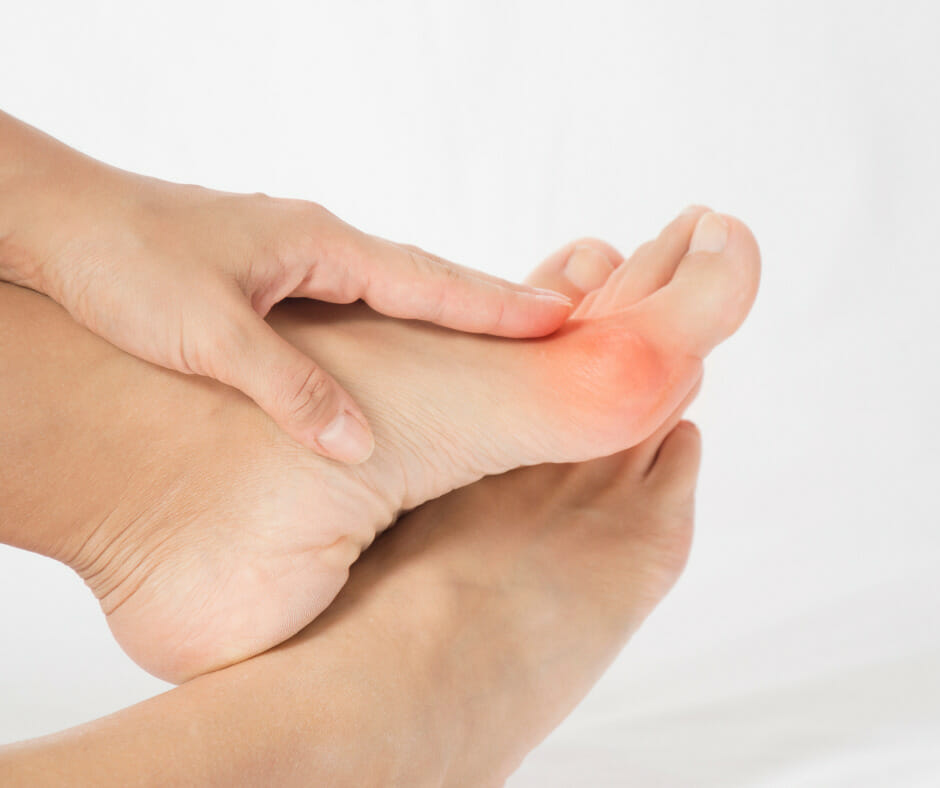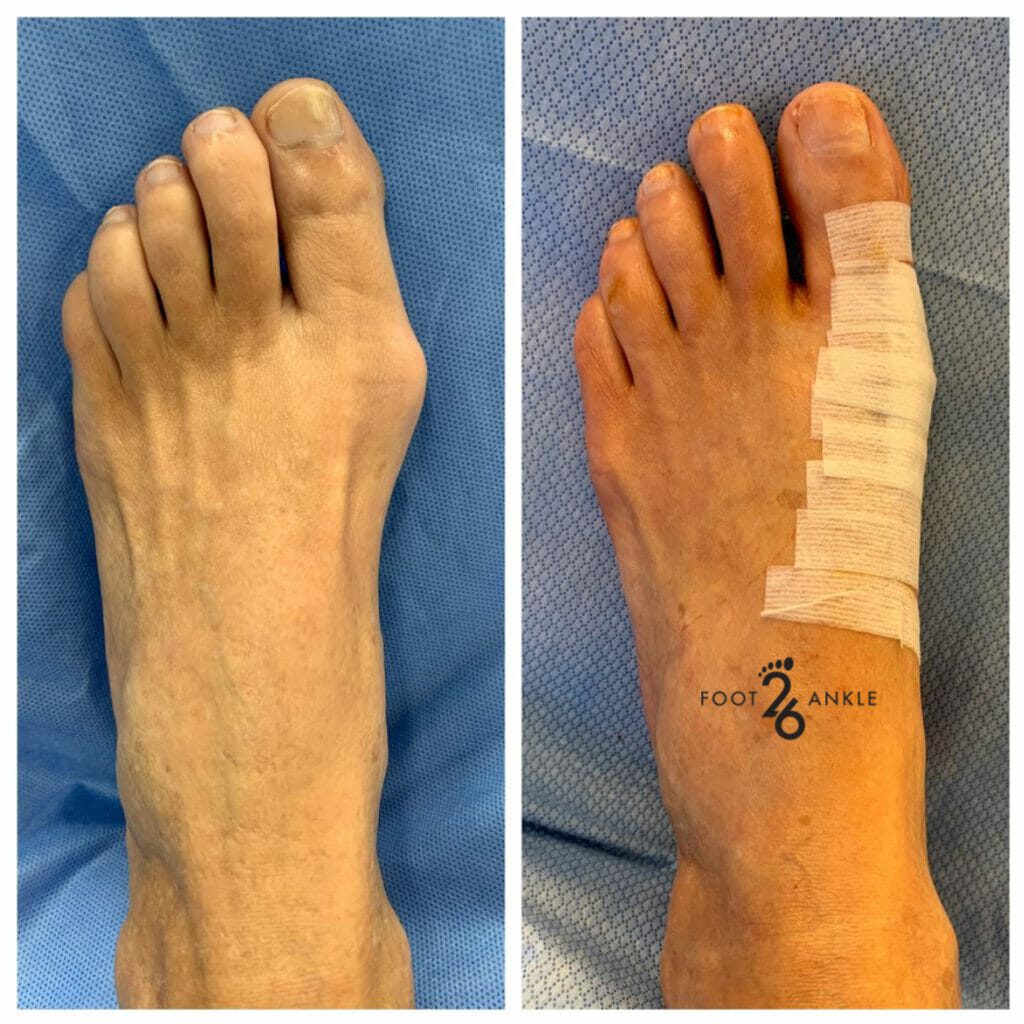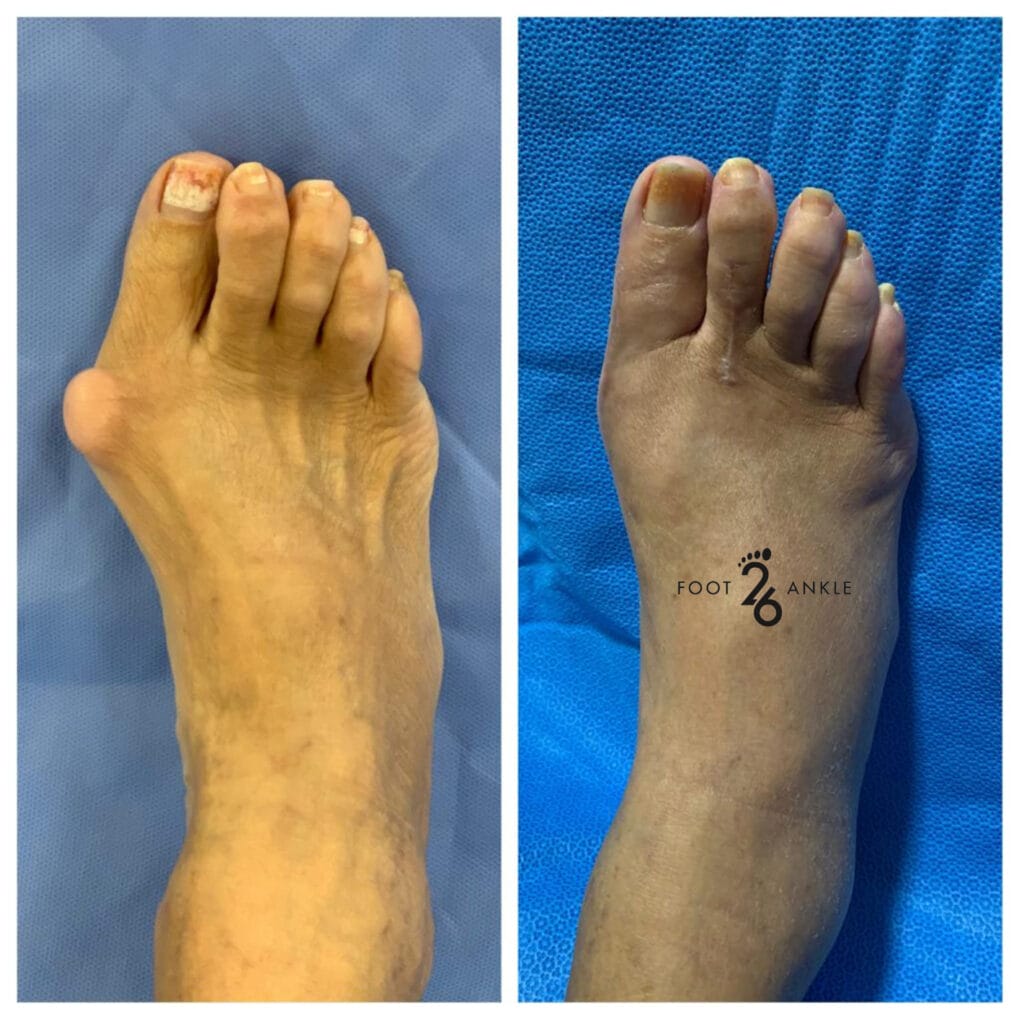The 26 Review
- What is a Bunion? a bony bump that forms at the base of the joint of your big toe
- Causes ill-fitting footwear, hereditary genes, autoimmune conditions, continual foot stress
- Symptoms pain, stiffness, swelling, visible bump, corns/calluses, limited range of motion in the big toe
- Diagnosis physical examination and X-Ray imaging
- Treatment Oral and topical anti-inflammatory medications and steroids, surgery, custom orthotics
Big Toe Joint: Bunion(Hallux Abducto Valgus) E-Book


BUNION
Put your best foot forward with our exclusive ebook dedicated to conquering bunions! Unlock the solutions to relieving discomfort, preventing progression, and enjoying every step with confidence. Don’t let bunions dictate your steps– download now for a journey towards happy, healthy, and pain free toes!

Let’s take a closer look…
Do you or someone you know suffer from painful and unsightly bunions? Our doctors can quickly diagnose and treat these stubborn deformities with multiple treatment options, including conservative and surgical options.
A bunion, or hallux abduction valgus, occurs when the big toe migrates over time towards the second toe, resulting in the big toe leaning against or overlapping with the second toe. At the same time, the long bone in your foot connected behind the big toe (metatarsal) also moves and will appear as a bump forming on the side of the foot.
Bunions can form in individuals of all ages, attributing to both cosmetic concerns and pain while wearing closed-toe shoes and during activities.
Causes
Poor-fitting and tight compressive shoes will certainly contribute to developing bunions over time. However, there is a strong genetic correlation to how feet develop, which is no different when it comes to bunions.
The size of a bunion is strongly linked to your parents’ and grandparents’ feet; more often than not, bunions will be of a hereditary nature. Wearing ill-fitting/narrow shoes (especially women’s high heels), arthritic autoimmune conditions that affect the joints, or because of continual foot stress/injury are all secondary elements that can influence the speed at which the bunion grows larger.
Regardless of the size, once you have a bunion, it may make walking and wearing closed-toe shoes difficult and sometimes painful. This can indirectly lead to knee, hip, and back pain due to walking abnormally to compensate for the foot pain.
In some cases, you may not even realize you are walking differently to compensate for the foot pain. Correctly identifying and modifying the contributing factors can aid in reducing symptoms and being able to walk again comfortably.
Symptoms
There are many potential symptoms of a bunion, including pain on or around your big toe joint, abnormal positioning of the big toe, pain or stiffness when walking, soreness at night while lying down, and decreased range of motion in your big toe. There is typically an enlarged prominence along the side of the great toe, and the big toe will lean towards and press against the smaller toes.
In severe cases, the big toe will lean so much towards the smaller toes it can push the second toe up and rest against the middle toe! It is prevalent to have both a bunion and hammertoes on the same foot. This abnormal alignment of the toes can lead to painful corns and calluses that develop on different parts of the big toe and smaller toes.
Additionally, there may be swelling in and around the big toe joint (with or without redness), which is most noticed after extended time on your feet, particularly at the end of the day. Moreover, bone spurs can develop on the top and side of the joint, causing the joint to enlarge over time.
The most notable symptoms are:
- a visible, bulging bump on the outside of the base of your big toe
- swelling, redness or soreness around your big toe joint
- corns or calluses in between your toes
- ongoing pain or pain that comes and goes
- limited mobility and range of motion of your big toe joint
- difficulty fitting into once-comfortable shoes
Diagnosis
Physician clinical experience and X-rays are the primary ways this condition is diagnosed. X-rays will typically demonstrate enlarged bone formation and spurring on the top and side of the metatarsal associated with the great toe joint.
In some cases, loose bone chips and fragments of bone may be seen floating within the joint. There may also be wear patterns in your shoes and shoe inserts demonstrating the breakdown of the shoe gear under the big toe.
Treatment For Bunions
Various forms of treatment are available for bunions; however, they are patient-dependent, and one size does not fit all. Since the underlying problem is based on the skeletal structure, the only way to truly remove the bunion is through surgery by repositioning the bones back into their normal alignment. If surgery is not a viable or desired option, there are a variety of conservative options to consider.
Oral and topical anti-inflammatory medications and steroids can help with painful symptoms as an initial treatment option. Medical grade over-the-counter and custom molded orthotics (shoe inserts) won’t move the bones back into place, but they can attempt to slow the progression by alleviating pressure off the foot joints.
Shoe modifications, including open-toed shoes and those with a wider toe box, can avoid direct irritation to the prominent bone as well. Medical grade gel padded socks, sleeves, joint realignment socks, bunion splints, and tapings are also options that can help alleviate painful foot symptoms while delaying or postponing surgery altogether.

